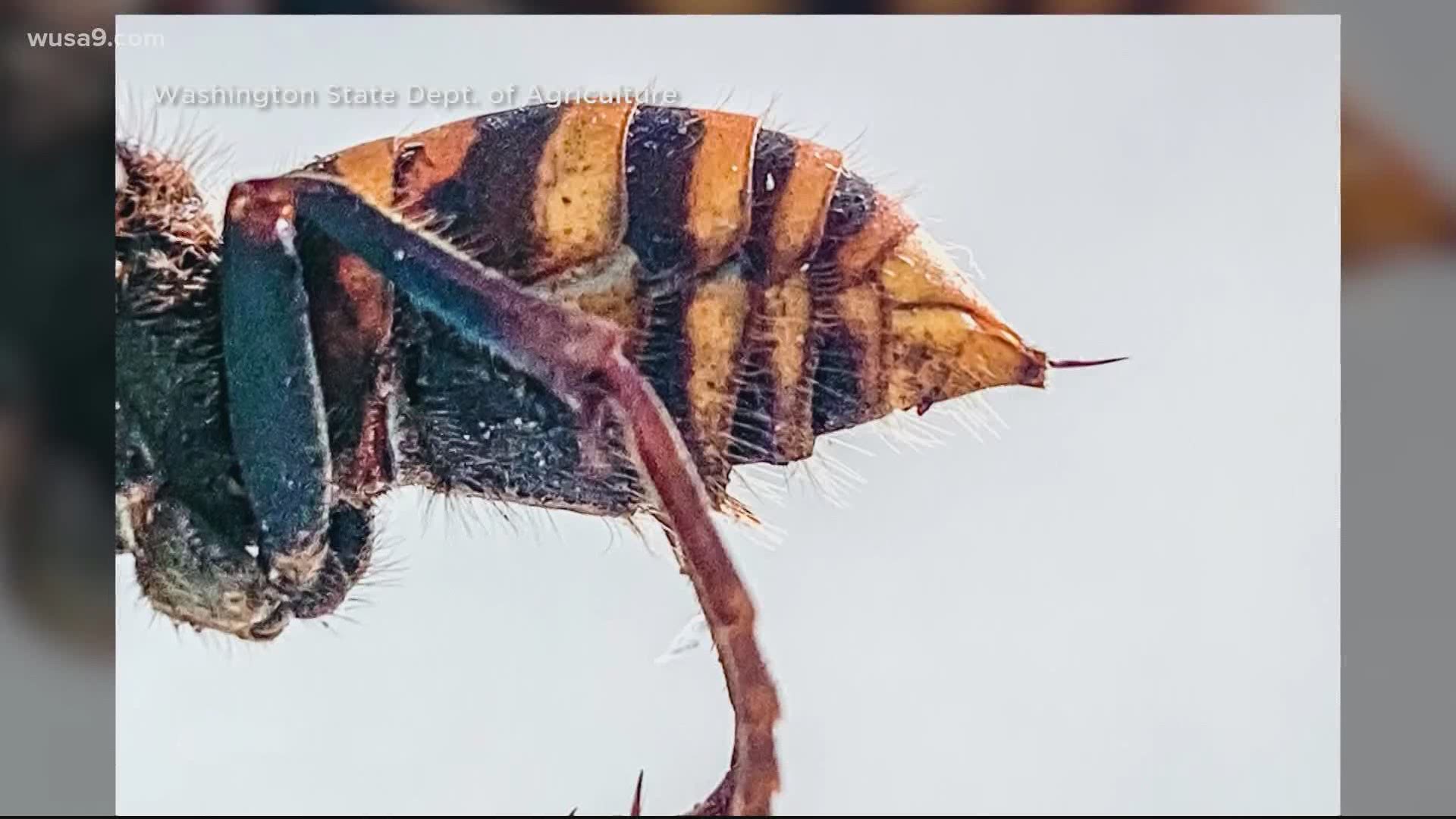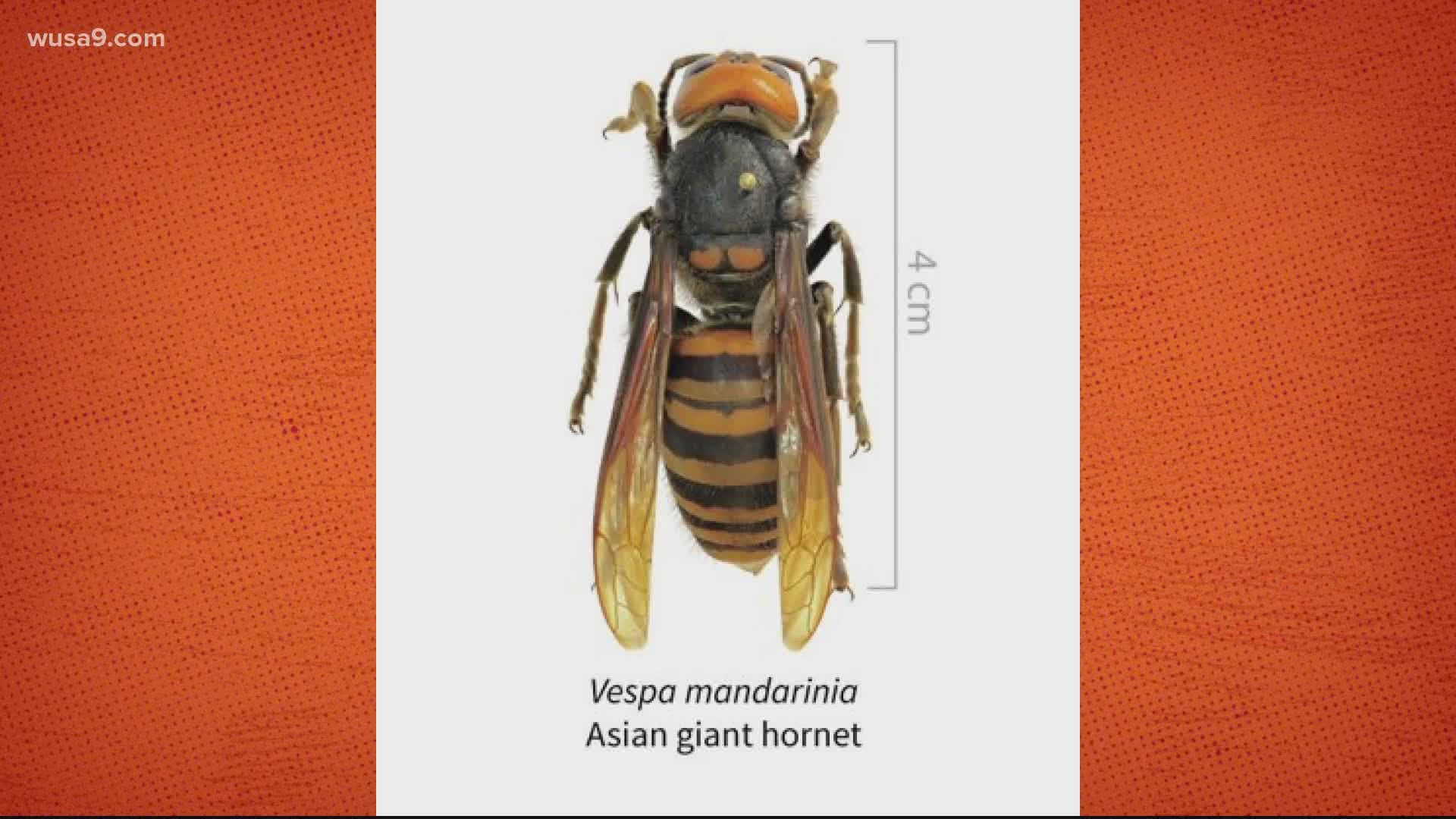WASHINGTON — If you’ve been on social media at all lately, it might make you think we’re in the middle of an apocalypse. If the coronavirus wasn’t enough to deal with, apparently murder hornets are in the United States too.
With a name like that – do you have to worry about them?
Murder hornets are native to countries like Japan, Taiwan, and South Korea. But they were found on U.S. soil for the first time in late 2019 in Washington state.
As the name suggests, these things can be deadly. Up to 50 people die from them in Japan each year. But the biggest concern is what they do to honeybees and what they can do to agriculture.
“What we know is that every third bite of food you take is associated with some kind of pollinator either a bee, a bird, or some other animal, it's actually pollinated,” Entomologist Michael Raupp said. “So the impact can be tremendous.”
Raupp is an Emeritus Professor of Entomology and an Extension Specialist at The University of Maryland.
He also added that pollinators, like bees, increase the nation’s crop values every year by more than $15 billion – a statistic further highlighted by the U.S. Department of Agriculture.
Murder hornets can kill up to 40 bees a minute, and when you factor in that bees support about $20 billion of U.S. agriculture every year, that could hurt.
This is on top of the fact bees are already dying. Beekeepers have lost about 30% of their colonies every year since 2006.
So what can we do to stop an invasive species that are already here? The plan, according to experts, isn’t that different from what we’re doing with the coronavirus.
“I think right now there should be a pretty substantial and serious effort to find out how wide the infestation is, how long it's been here, and then we can begin to formulate a strategy for mitigation,” Raupp explained.
Experts also point out these hornets haven’t made their way to the east coast, at least not yet. But it’s still a good time for anyone to get prepared.
“I think it's time now for people to become informed, figure out what this thing looks like, and keep an eye out for it.”


